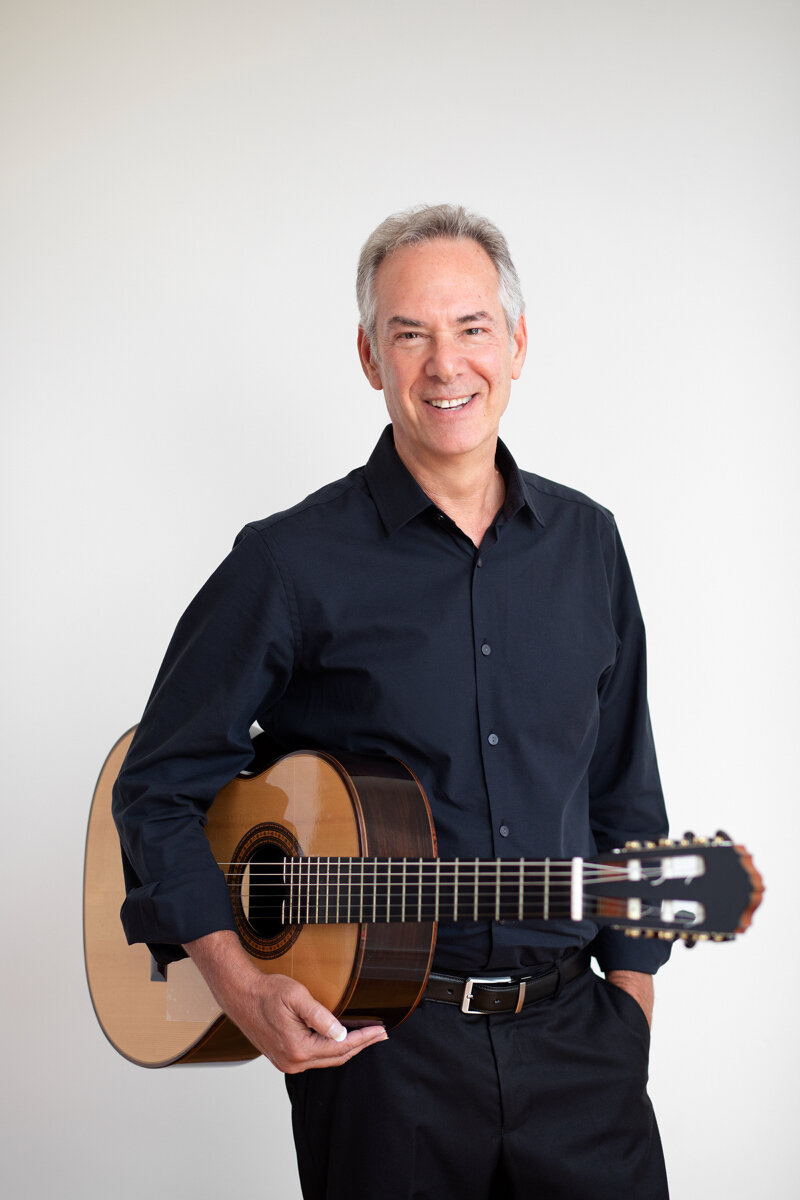Brazilian Masterworks
Brazilian Masterworks
“fascinating." (Classical Guitar Magazine)
The Complete Burle Marx guitar works are available in an edition by Stephen Aron here.
PLAYLIST
Music of Burle Marx
1 Saudade do Nosso Amigo[5:09]
2 Mr. B. A. C. H. Visits Brasilia4:37]
Violeiros de Guaratiba
3 I. Festa (Samba) [1:45]
4 II. Santa Antonio da Bica (Choro) [3:09]
5 III. Conversa (Fuga) [2:21]
6 IV. Flora Amazonica (Fantasia) [6:32]
7 V. Folias de Guaratiba (Frevo) [2:17]
8 Saga do Medievo[17:29]
Music of Heitor Villa-Lobos
Suite Populaire Brésilienne
9 Mazurka-Choro[3:44]
10 Schottisch-Choro[3:57]
11 Valsa-Choro 1[4:34]
12 Gavota-Choro[5:31]
13 Chorinho[5:44]
14 Valse-Choro 2[4:56]
NOTES
This recording features the world premiere of the complete guitar works of Brazilian composer Walter Burle Marx. A celebrated pianist and conductor, Burle Marx (1902-90), composed for chamber ensembles, symphony orchestra, choir and various solo instruments. He wrote his guitar works in the 1970’s after beginning a friendship with the renowned guitarist Andres Segovia. The pieces were never played or published, however, and appear here, in their entirety, for the first time ever. The works are both substantial and compelling, and represent an extraordinary addition to the guitar repertoire. They are highly listenable pieces, imbued with the rich colors of Brazilian harmony and rhythm, and demonstrate an authentic gift for melody. It is a thrill to be able to offer these works to the listening public.
This CD also features a recently rediscovered solo guitar work by Brazilian master, Heitor Villa-Lobos (1888-1955). The Suite Populaire Bresilienne is a five-movement collection of pieces known for their highly melodic and folkloric character. Many of the movements rely on the traditional choro rhythm known well to the composer from his formative years playing in choro bands. A hitherto lost sixth movement adds a wholly new dimension to the composition. The missing movement, entitled “Valse-Choro,” is an entirely different piece than the “Valsa-Choro” already featured in the Suite. The “new” Valse-Choro is added at the end of the Suite in the recording in order to preserve the compostition’s original published sequence. This “new” work is a beautiful and idiosyncratic piece which I am enormously pleased to be able to include in this recording.
Burle Marx
Born in 1902 in São Paulo, Brazil, Walter Burle Marx began his career as a pianist, studying in Rio de Janeiro, London and Berlin. Although he concertized widely throughout Brazil and Europe in the 1920's, he also studied composition with Emil von Resnicek and conducting with Felix Weingartner during this period. In 1931 he founded the Rio de Janeiro Philharmonic and conducted numerous premieres with this orchestra (including the first South American performance of Beethoven's Ninth Symphony). Soloists with the orchestra included Arthur Rubinstein, Mieczislav Horszowski and Margaret Long. He was also the first to organize youth concerts in Brazil.
During the decade following his return to Brazil in 1931, Burle Marx continued to guest conduct in both Europe and the United States. Among the most notable orchestras that he guest conducted were the Berlin Philharmonic, the New York Philharmonic, the Cleveland Orchestra, the Detroit and the National Symphony Orchestras. He served as Music Director of the Brazilian Pavilion at the 1939 World's Fair in New York City where he conducted the New York Philharmonic in several premieres of works by now-notable Brazilian composers such as Heitor Villa-Lobos and Camargo Guarnieri. He also introduced some of his own compositions. One of these, Fantastic Episodes, prompted N.Y. Times critic Olin Downes to remark, "It was a score of astonishing workmanship. Very few young men of his generation could write with such a proficiency that it conceals knowledge and seizes the public.”
In 1947 Burle Marx was appointed Artistic Director of the Rio de Janeiro Opera. In 1949 he left Brazil in order to become a permanent U.S. resident and devote himself entirely to composition. From 1952 until his retirement in 1977, he taught piano, theory and composition at the Settlement Music School in Philadelphia. He continued to compose until his death in December of 1990. Among Burle Marx's other richly varied works are four symphonies, two concertinos for piano and orchestra, a cello concerto, two string quartets, a quartet for ancient instruments, a quintet for flute and strings and a song cycle.
Villa-Lobos
Heitor Villa-Lobos (1887-1959) was born in Rio de Janeiro where he learned music initially from his father, then at the National Institute of Music; he also studied for a time in Paris. His music was from the beginning influenced by Brazilian folk music (he went on a number of indigenous music-collecting trips as a young man), and is recognizably individual and unique. He was appointed Director of Music Education in Rio de Janeiro and, through this post, had a broad and long-lasting influence on music and music education in his country. As a composer and orchestral conductor, Villa-Lobos traveled widely, becoming renowned across Europe and the US. A prolific composer, many of his works have entered the canon as standard repertoire. He wrote twelve symphonies, eighteen concerti, dozens of additional orchestral pieces, including many ballet scores, a large group of “choros” set for various instrumental combinations, and, perhaps most famously, a group of “Bachianas Brasileiras.”
Villa-Lobos’ compositions for guitar are among his most well-known and widely recorded. His “Five Preludes” and “Twelve Etudes” are considered indispensable repertoire for guitarists. The choros that make up the present Suite are among his most melodic and charming instrumental works.
—Stephen Aron

